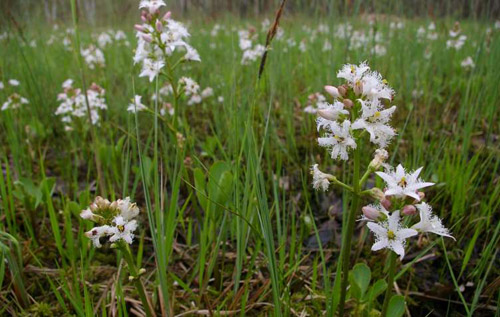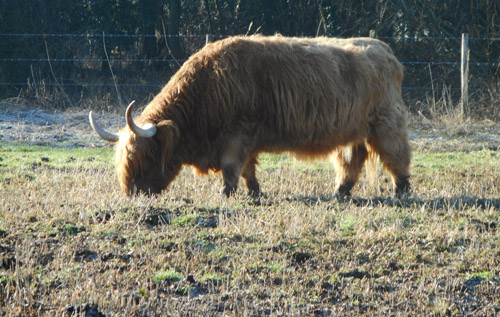Open day to celebrate the heritage of ‘common’ land
By Richard Taylor
This year’s Whitwell Common open day will be held on Saturday 1 July from 11 am – 4 pm, which coincides with Norfolk Wildlife Trust’s Norfolk Commons Week (1–7 July).

Bog bean (Menyanthes trifoliata) flowers on Whitwell Common. Photo: Richard Taylor
“We’ve lived in Reepham for more than 30 years and we had no idea about this place” is a comment frequently made by visitors to previous open days. (Of course, you can visit Whitwell Common at any time.)
Commons in Norfolk were once “commonplace” and were often very extensive. For example, the common at Brisley, either side of the B1145, still grazed by sheep, is the county’s biggest.
More than 25% of Norfolk’s land area may at one time have been common land, and the names of former commons and greens, now long gone, still feature in place names.
Norfolk commons are wonderfully diverse: coastal commons of dune and tidal saltings; Broadland commons of marsh and fen; even some that have become tightly mown village greens.
Whitwell Common is one of the few remaining open fen habitats typical of Norfolk river valleys: it has been a Site of Special Scientific Interest (SSSI) of national importance since 1954.
Spring-fed, it never dries out, which enables several species of orchids and wildflowers to flourish.
The common also supports many bird species, including water rail, snipe, barn owl and kingfisher.
The quiet visitor can often spot a deer, 60 metres distant, standing stock still after it has picked up the smell of a human.
Nowadays, rare breed cattle are “employed” in late summer and autumn. They graze the open fen and chew small scrub, and are a link with past centuries and much appreciated by visitors.
The history of British commons is a long and sometimes tragic story of enclosures, when land, formerly used “in common”, was fenced and ordinary people’s ancient common rights, to graze animals, gather firewood or dig peat, were removed.
Some commons in Norfolk were enclosed between the 14th and 18th centuries, but large areas survived until the parliamentary enclosures between 1760 and 1860.
Whitwell Common locals retained some benefits until the 1930s, such as the right to graze small, fixed numbers of animals, and a person referred to as a hayward was retained to maintain the open habitat.

Highland cattle maintaining the open fen by grazing on Whitwell Common. Photo: Richard Taylor
